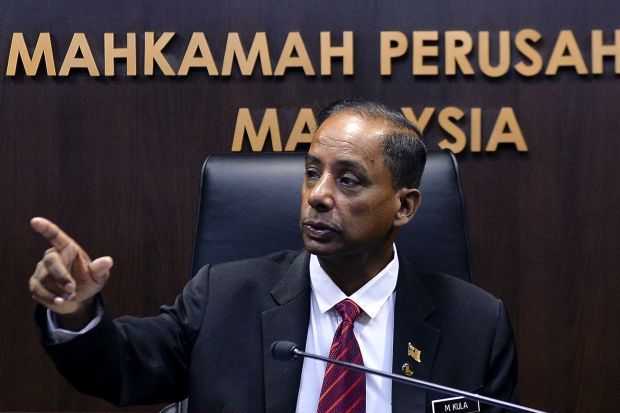CYBERJAYA | The Ministry of Human Resources is in the midst of drafting the National Human Resources Blueprint (NHRB) to prepare Malaysia for the Industrial Revolution 4.0 (IR 4.0) and resolve issues faced in the labour market.
Minister M. Kulasegaran (pix) said the NHRB would analyse the changes and opportunities created in the fields of employment, skills and human capital development to help enhance the economic growth of Malaysia.
“This in return shall pave the way for the development of a strategic and comprehensive Human Resource Development plan which will carry out an in-depth analysis pertaining the trend, pattern and issues concerning three main frameworks which are workforce, workplace and jobs,” he said in his speech at the launch of Human Resource Convention here today.
His speech was read out by the ministry’s deputy secretary-general (policy and international) Datuk Kua Abun.
Kulasegaran said under the workforce’s framework, the NHRB would assess the impact of liberalisation, globalisation, digitalisation, e-commerce, technology advancement and innovation brought upon by IR 4.0 toward the Malaysian economy and its implication on the employment for citizens, foreign workers and expatriates.
He said the study would identify and assess the number of the workforce within the Special Target Groups categories, namely the bottom 40% of the household income (B40) group, female workers, disabled persons and the elderly.
“The study will also identify and asses the current and future requirements for workforce development through Technical and Vocational Education and Training (TVET) and Life-Long Learning including the Recognition of Prior Learning.
“This is to ensure that 35% of the nation’s total workforce shall be skilled in the various fields by 2020,” he said, adding that the study would also assess, review and formulate policy directions of reducing the country’s dependency on foreign workers and expatriates.
Under the framework of workplace, Kulasegaran said the ministry had undertaken efforts to carry out amendments to the existing labour legislations mainly the Employment Act 1995, Trades Union Act 1959 and the Industrial Relations Act 1967.
“This is to ensure that the labour legislation are non-discriminatory, flexible and is in line with the international standards as determined by the International Labour Organisation,” he said.
Under the framework of jobs, he said the study would identify and forecast manpower requirements by economic-sectors, critical sub-sectors and occupation categories in line with the needs of the economy for the period 2019-2035.
“Through this study, the government will be able to forecast manpower supply by levels and fields of study and specialisation from public and private tertiary institutions to cater for future skills need of the IR 4.0.
“This national blueprint will also enable the government to identify the occupations that can be categorised as knowledge-manpower and determine the key or critical occupations required for the IR 4.0 besides identifying new growth areas,“ he added. — Bernama









